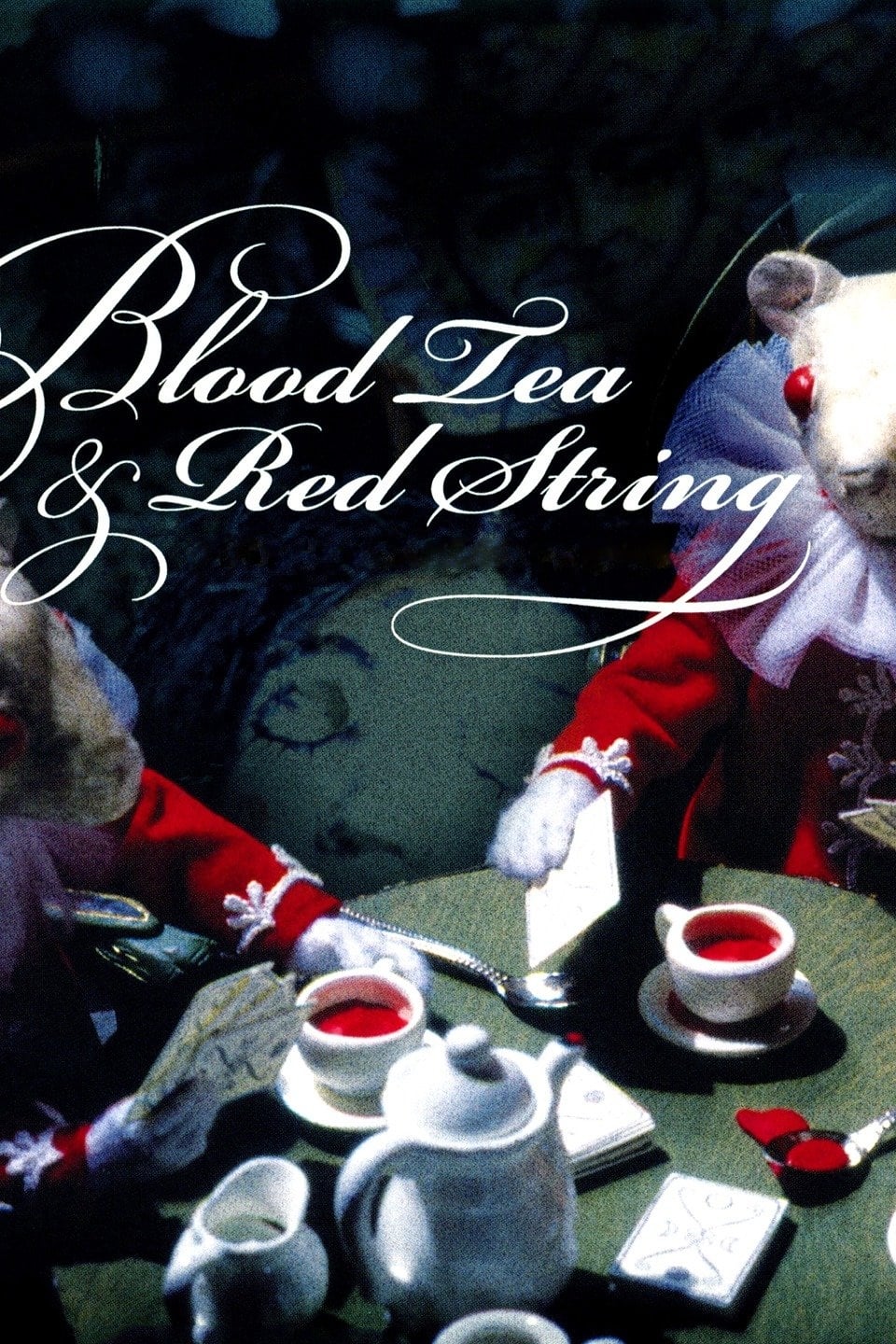
The aristocratic White Mice and the rustic Creatures Who Dwell Under the Oak battle over the doll of their heart's desire.
21 Jan Blood Tea and String (2006)
Alice’s Rosencrantz
I saw this on Christmas Day and was rather thankful. 2006 has been a bad year for movies and at the end of each year I start to put together my additions to my short list of films everyone should watch before they die (if they want to be lucid in a film life).
Only two per year are allowed and I had none for 2006. I may put this on the list of what I call “Fours.”
It is a short film that seems excruciatingly long. This is a flaw that I think starts to work for the thing after it has stopped working against it. The reason is a matter of pacing. Usually, we look to cinematic storytelling to be economical, like say it is in dreams. Something is shown only as it adds value, nothing is shown for mere completeness. We’d wonder about a filmmaker that shows us every act of the detective driving to an interview: opening and closing car doors, turning the key, fastening seat belt and so on.
In this movie, the filmmaker apparently hasn’t mastered the notion of economy. If you have three mice and each is to eat three worms, prepare to see nine worms roasted, grabbed, chewed and swallowed. If you have three mice rescued from carnivorous plants, you’ll have to see the entire rescue in detail three times. I suppose if you spend a month for a minute of film (what this works out to) you would be reluctant to cut. So your first impression is likely to be that there is no imposed rhythm, that the thing plods.
But it works for it, I think in an unintended way. The early Herzog had a trick: he would shift in and out of documentary mode with his camera. When in that mode, he would act like a newsman discovering and documenting something real. The camera would catch what it could and linger wherever it happened regardless of narrative necessity. It had the effect of making what we saw real. And of course it was: we saw a crazy man in a South American jungle doing crazy things that we knew were really done as we saw them.
But Herzog in those same films would insert formal shots. Stylized poses and action that reminded starkly that what we are seeing is something staged, artificial. Moving between these two modes is one of the most effective cinematic devices in the book, and that’s what we have here. Some shots are so stylized, they’re cliches: beings on a quest silhouetted by a setting sun. It works.
We also have what I call folding, tricks to place us in the thing. The story is a bunch of dolls placed to evoke emotional memories in us, and the story has them (those very dolls) obsessed with a doll. Also, if you know the history of fantasy well, you’ll immediately recognise that this in an inverse Alice in Wonderland, instead of Alice imagining animals, they imagine her. More: there’s a wonderful tea party, card game which has many enticing elements, the one of note here is that they play with cards that have no faces. Later, the “story” is drawn on those faces.
Finally, we have a framing device. The story features an egg that appears down a stream, is placed in the doll, hatches and things happen. It is framed by the living doll pouring tea, placing an egg in the teapot (which in the story will come floating down a stream). At the end of the story, an object in a pouch is placed in the same stream by the mice and it appears in our living doll’s teacup. A bit dear but clear.
And all of this before we get to the actual images. They are extremely effective. Absolutely, breathtakingly engaging. They are original, and sharp because of it. No, there’s no Quay or Svankmejer in this. No, it’s not dark in any respect. I’ve said before that to make interesting films you have to be an interesting person. Encountering this makes me think there is an interesting person in this woman, someone worth knowing, though I suspect unless you fully enter her world she will not touch you.
Back to the film, when you watch it, notice how she handles the psychedelic sequence. Its a well known problem in film: how do you show something that is by definition unshowable? How do you use vision to bend vision, the actual process of cognition? What she’s done here is gentle, not wild. But it is effective and original. Barriers rather than coloured lights. William Morris intercessions.
A final note. The sound. Its sparse, sharp-edged, economical in ways the visuals aren’t. An amazingly effective compliment.
It may be that this is an unrepeatable event, that we may not get another special thing from this woman. Or it may take too long, but let’s hope not. In any case, she’s in my life in a small way now, and may find her way into yours if you experience this.
Posted in 2006
Ted’s Evaluation — 4 of 3: Every cineliterate person should experience this.


No Comments